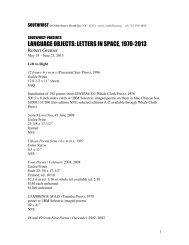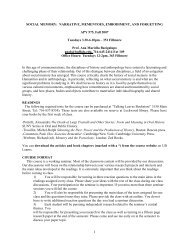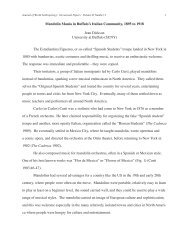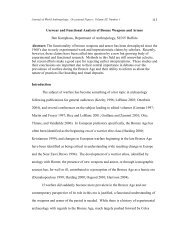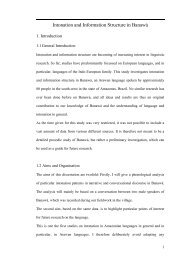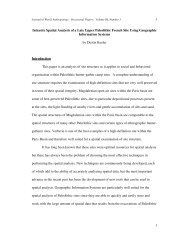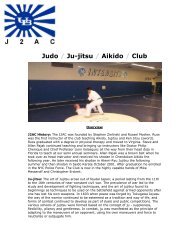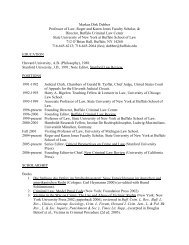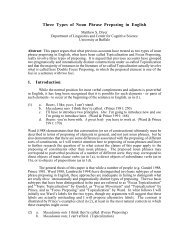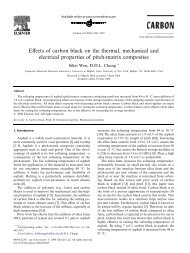Electrophysiological Evidence for Sentence Comprehension - Wings
Electrophysiological Evidence for Sentence Comprehension - Wings
Electrophysiological Evidence for Sentence Comprehension - Wings
Create successful ePaper yourself
Turn your PDF publications into a flip-book with our unique Google optimized e-Paper software.
Figure 72. Difference between the experiments in the SLI group (F3, Fz, F4<br />
electrodes)<br />
These results indicate that the dissociation between the processes related to the<br />
constituent and operator projections of the clause does not exist in the group of<br />
participants with SLI. Since the dissociation is most prominent in the group of adult<br />
speakers, modularization of language processing can be understood as a final stage of<br />
language development and optimal way of language processing. Children with SLI do not<br />
process sentences this way, but instead, they process the sentences in an impropriate way.<br />
Perhaps they never reach the final stage in the language development and develop some<br />
compensatory mechanisms (good behavioral results of the SLI children who attended<br />
therapy and, in fact, learned the tasks through practice can be a behavioral correlate of<br />
these mechanisms).<br />
These results are not in accordance with the mentioned sentence task experiment in van<br />
der Lely & Fonteneau (2003) in which a semantic component (N400) was obtained<br />
instead of syntactic components (LAN and P600) in a group of G-SLI children. They<br />
interpreted the findings as a consequence of a deficit in the syntactic module; there<strong>for</strong>e,<br />
the G-SLI children process sentences only semantically or, to use different terminology,<br />
148




